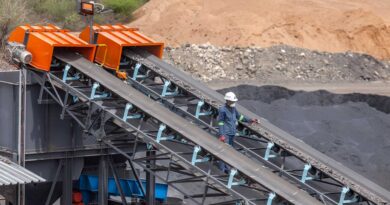Palladium: a rollercoaster ride amid COVID-19 pandemic
Palladium price managed to hold its ground above USD 2,000 per ounce in 1H2020 despite plunge in global car sales and substantially deteriorated outlook for the global automotive market. Global supply of the metal reduced owing to coronavirus-related stoppages in South Africa and lower output in Russia.
Palladium started the year very strongly, reaching its all-time high of USD 2,795 per ounce on February 28, 2020. The price rally was driven by the lack of ingots in the spot market and high physical demand in China driven by the roll-out of China-6 emission standards.
Additional boost for palladium came from rhodium (which is often a good lead indicator for palladium price) that sky-rocketed from USD 6,000 per ounce in December 2019 to USD14,000 per ounce in early March.
Whenever rhodium is in physical shortage, car-makers are forced to increase their palladium loadings substantially. The outbreak of COVID-19 derailed the palladium price rally, with shutdowns both in automotive industry and catalyst fabrication leading to demand contraction, resulting in a sharp price decrease to less than USD 1,600 per ounce on March 18, 2020.
However, as the South Africa started to halt its mines for sanitation and global central banks further loosened their monetary policies, the palladium price recovered to USD 1,800 – 2,000 per ounce range in 2Q2020.
The average palladium price in 1H2020 increased 51% y-o-y to USD 2,136 per ounce. In 1H2020, government-imposed lockdowns across the globe caused massive losses in both auto production and auto sales.
According to LMC Automotive global car sales were down 28% in 1H2020, with largest declines recorded in Europe (-37%), North America (-25%) and China (-20%). The global palladium supply was not immune to coronavirus either.
Even before the infection outbreak Anglo Platinum put one of its smelters on care and maintenance for two and a half months, resulting in the reduction of refined PGM production by approximately 0.5 moz.
National lockdowns introduced in South Africa hit severely palladium mined output, with exports from South Africa decreasing 29% or 240koz y-o-y in 1H2020.
Even though Norilsk Nickel managed to avoid any coronavirus-related operational disruptions, its palladium production was down 17% y-o-y owing to a very high base of 2019, when previously accumulated work-in-progress inventory was released.
PALLADIUM OUTLOOK IS NEUTRAL
The market is expected to be balanced this year with auto industry likely to suffer its worst crisis in decades driving the palladium demand down 16% y-o-y. Palladium supply is expected to decrease 14% y-o-y due to supply losses in South Africa and lower recycling.
Norilsk Nickel, the largest palladium producer, expects industrial palladium consumption to decrease to 9.1 moz y-o-y (down by 16%), following an unprecedented contraction of end-use demand. Car sales are expected to plunge22% y-o-y to 70 million units in 2020, while other palladium-consumers such as dental, chemical, electronics and jewellery industries are also expected to remain depressed.
Given a substantial reduction in demand, consumers’ stockpiles throughout the entire value chain should contribute additionally to supply, thus further reducing metal purchasing. The only visibly strong market so far is China, where after coronavirus-related restrictions in 1Q2020 retail car sales recovered strongly in April-June.
According to analysts’ consensus, there is a concern that other countries will be unable to follow Chinese recovery pace, and there is a risk that although automakers have just relaunched their factories, production could subside again if deliveries to dealerships do not pick up accordingly.
Palladium supply seems to be normalizing as South African companies re-opened their mines though at reduced capacities. Assuming that some of the accumulated work-in-progress material will be released during the rest of the year, the output losses incurred in 1H2020 will not be fully recouped.
Therefore, the analysts expect the global primary supply to decrease by more than 1.0 moz this year. Recycling volumes are also expected to decrease by 0.4 moz.
In total, the global supply will drop by 14% to 9.1 moz in 2020.
In 2021, we expect the global light vehicle sales to recover to over 82 million units (up 16% y-o-y) from 70 million units in 2020. Full recovery in recycling and primary South African supply should balance the market in 2021.
In an aftermath of the COVID pandemic, there is a clear trend towards increasing popularity of individual mobility, since people would likely to avoid less safe public transport, taxis and car sharing.
Restrictions on the mass transit transportation systems as well as concerns over not meeting the minimum social distancing in a public transport should encourage personal car ownership and usage.




